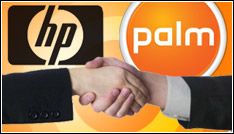CEO: HP To Put Palm WebOS On Printers

Chief excutive Mark Hurd promises Palm WebOS on printers during a financial call
Hewlett-Packard will use Palm’s WebOS operating system in devices beyond phones and tablets, including printers, according to comments by chief executive Mark Hurd
During a conference call to announce strong quarterly earnings, Hurd said that the goal of HP’s proposed $1.2 billion (£800m) acquisition of ailing Palm is the company’s mobile operating system, webOS, which HP plans to spread throughout its stable of connected device, including Web-enabled printers.
Smartphones not the only thing for WebOS
 While Hurd certainly wants to grow Palm’s smartphone business, the real key to the deal is Palm’s webOS. “[The proposed deal] isn’t precisely a smartphone play, as I’ve seen some people write [here, for instance],” Hurd said. “It is, for us, strategically broader.”
While Hurd certainly wants to grow Palm’s smartphone business, the real key to the deal is Palm’s webOS. “[The proposed deal] isn’t precisely a smartphone play, as I’ve seen some people write [here, for instance],” Hurd said. “It is, for us, strategically broader.”
HP offers a wide range of connected devices that would benefit from having a common operating system, he said: “We expect to leverage WebOS into a variety of form factors, including ‘slates’ and Web-connected printers.”
HP had been developing a tablet PC called Slate that was set to run on Microsoft’s Windows 7 operating system and challenge Apple’s popular iPad. However, once HP announced is intentions to buy struggling Palm, the industry soon heard that the technology giant had ditched the Slate in favor of creating another tablet, dubbed Hurricane, which will run the widely-praised webOS.
Reports have said that a webOS-powered Hurricane could hit the market as early as the third quarter. Hurd said that HP’s intention is to be a player in the tablet market, which he believes will not be dominated by a single product, but rather be a robust space with a number of alternatives from different vendors.
As the world becomes more mobile, there will be a wide range of preferences in what customers want from their devices. They will demand choice, he said.
Hurd said that despite the change of direction in HP’s tablet plans, Microsoft was still an important partner.
“Microsoft is probably one of the best relationships we’ve got in our company, and they’re still extremely important to us,” he said. “There are a couple of form factors, though, that are very attractive for us, and these small form factors is where we think the IP can be very additive.”
Hurd said the real driving force behind the Palm acquisition is webOS. With so many connected devices in their product portfolio, HP officials believe it’s important to have a common operating system on which to run them, he said.